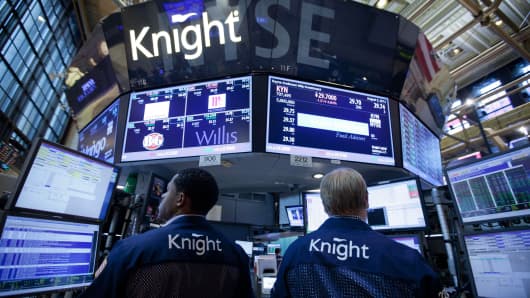A P/E ratio is a key tool for investors to help figure out if they are getting the most for their investment dollars. But there are layers to this valuable piece of information. CNBC explains.
What is a P/E ratio?
It's the price of a stock divided by its basic earnings per share. So in the formula ,the "P" stands for price and the "E" stands for earnings.
The answer — often referred to as the multiple — gives investors an idea of how much they are paying for a company's earning power.
For instance, if a stock is selling at $20 a share and earnings are $1, the PE is 20, which is considered an average for P/E ratios.
A high P/E ratio means investors are paying a higher price on average for a stock and consequently, the investors will expect higher earnings growth. That's why ratios of more than 20 are considered riskier to trade and are usually posted by young, fast-growing companies.
Lower ratios are traditionally associated with firms that have low growth or are in older industries, or stocks that are out of favor with investors.
What are the different types of P/E ratios?
There are two basic types. One is called trailing P/E and the other is forward P/E.
Trailing P/E uses reported earnings from the latest year, while forward P/E uses an analyst's forecast of next year's earnings. So using our figures from above, a trailing P/E ratio would be 20 ($20 a share divided by $1 a share for earnings). If the projected earnings for the same stock was $2 a share, the forward P/E would be $10 (20/2=10).
Does a P/E ratio determine the exact worth of a stock?
No. A low P/E does not necessarily mean a stock is cheap, just as a high P/E doesn't mean a stock is expensive.
What a P/E ratio can do is compare the P/E of one company to another in the same industry, to the market in general, or to the company's own historical P/E ratios.
As with all ratios, it's important to look at the P/E over time in order to determine the trend of a company's stock value.



